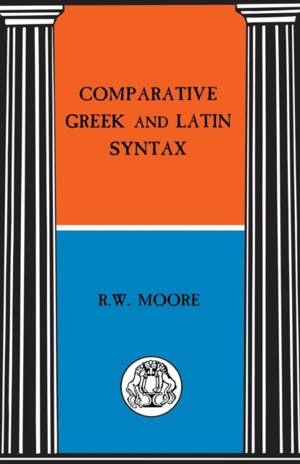
- Retrait gratuit dans votre magasin Club
- 7.000.000 titres dans notre catalogue
- Payer en toute sécurité
- Toujours un magasin près de chez vous
- Retrait gratuit dans votre magasin Club
- 7.000.0000 titres dans notre catalogue
- Payer en toute sécurité
- Toujours un magasin près de chez vous
84,95 €
+ 169 points
Description
Modern students' lack of formal training in the grammar even of their own language leads to an impatience with the jargon and rules of syntax in their study of the ancient inflected languages. This comparative approach to Greek and Latin (first published in 1934) serves to introduce students to the syntax of both languages side by side.
The book has three main thrusts: the first critical - to explain usages and the labels and theories attached to them; the second historical - to explain the process by which the languages developed and changed; the third psychological - how did the working of speakers' or writers' thoughts make them express themselves and even vary 'normal' usages? The book still challenges anyone with an interest in the classical languages to see them as dynamic, developing entities, not as something fixed or dead.Spécifications
Parties prenantes
- Auteur(s) :
- Editeur:
Contenu
- Nombre de pages :
- 235
- Langue:
- Anglais
- Collection :
Caractéristiques
- EAN:
- 9781853995989
- Date de parution :
- 16-12-99
- Format:
- Livre broché
- Format numérique:
- Trade paperback (VS)
- Dimensions :
- 141 mm x 217 mm
- Poids :
- 322 g

Les avis
Nous publions uniquement les avis qui respectent les conditions requises. Consultez nos conditions pour les avis.






